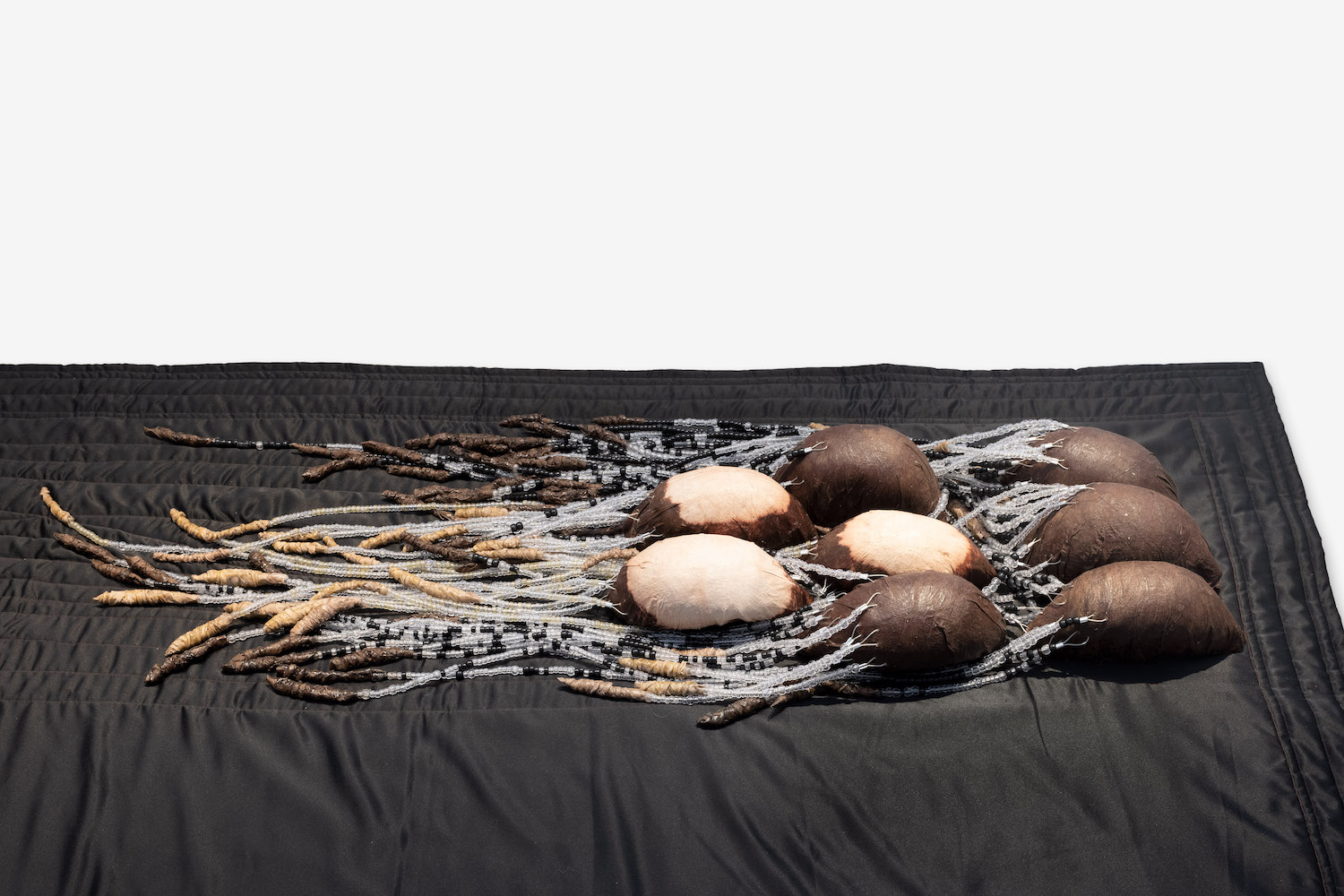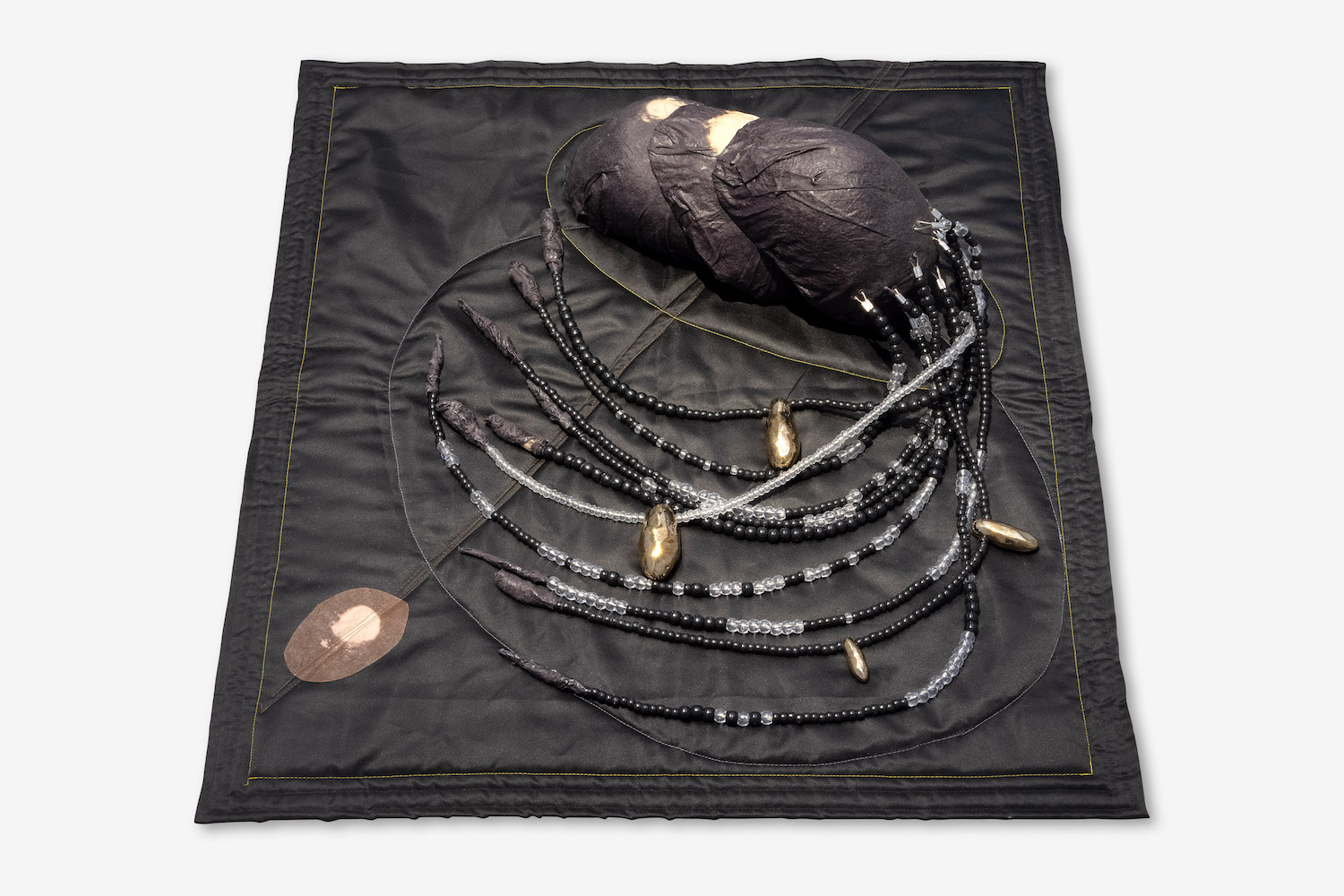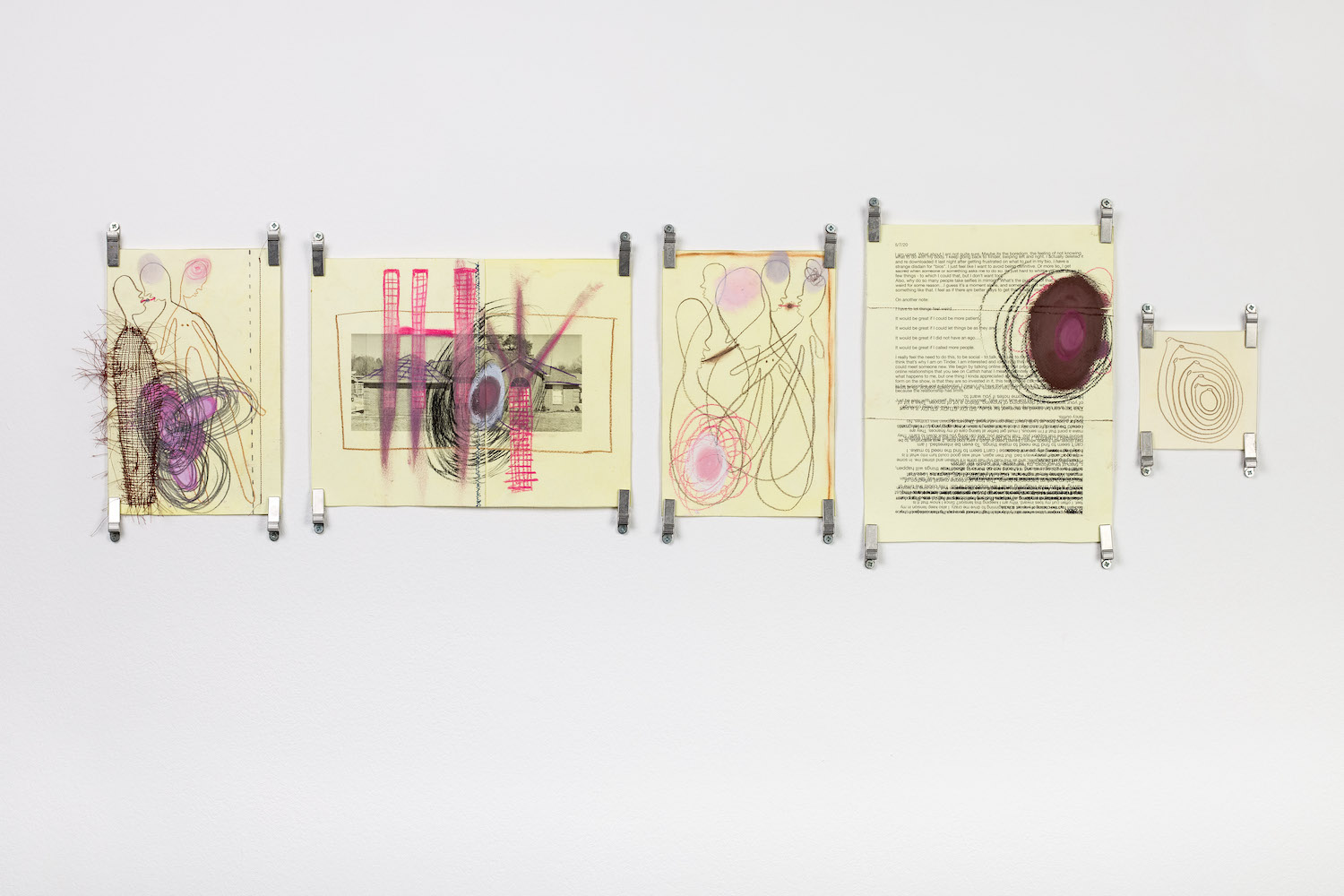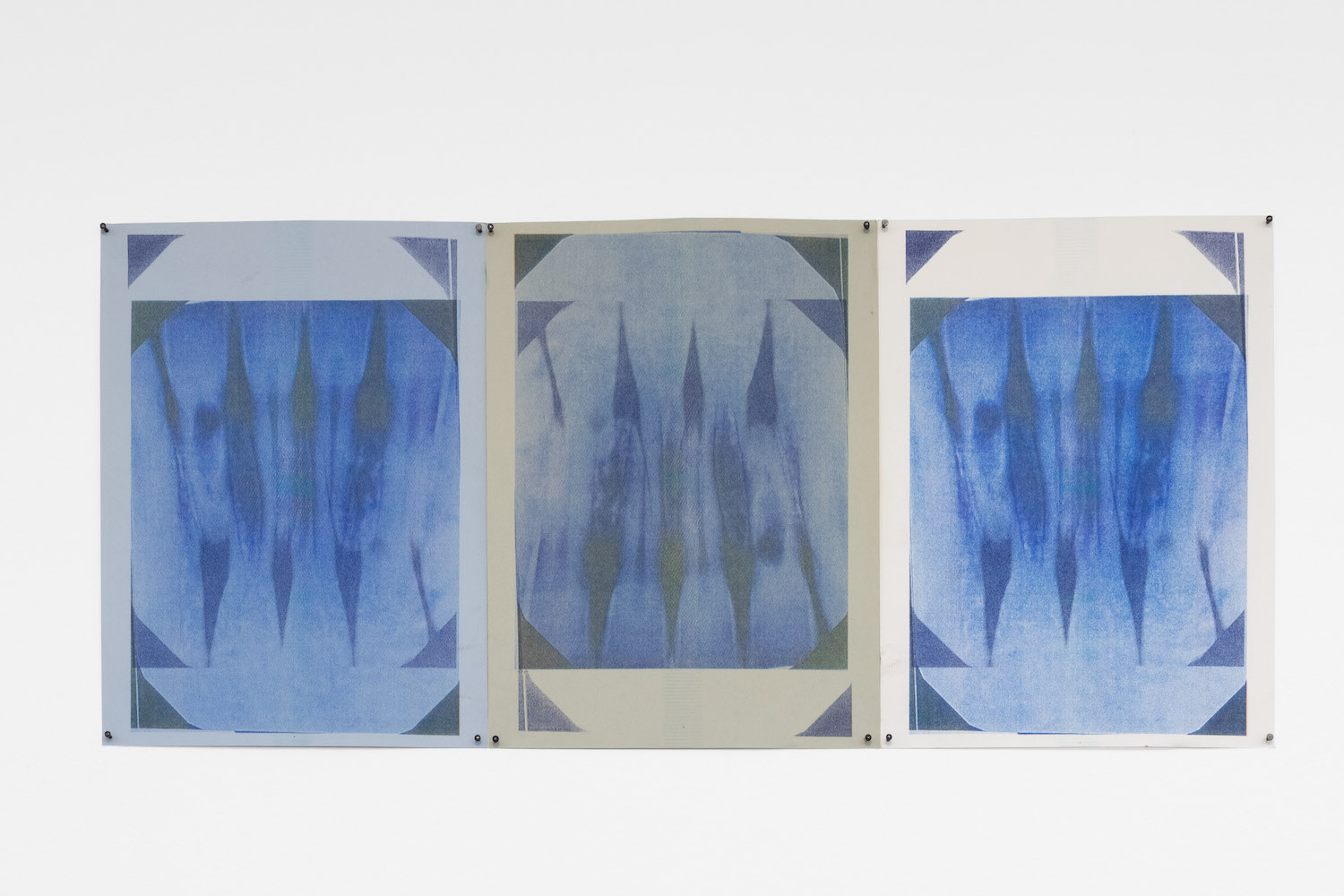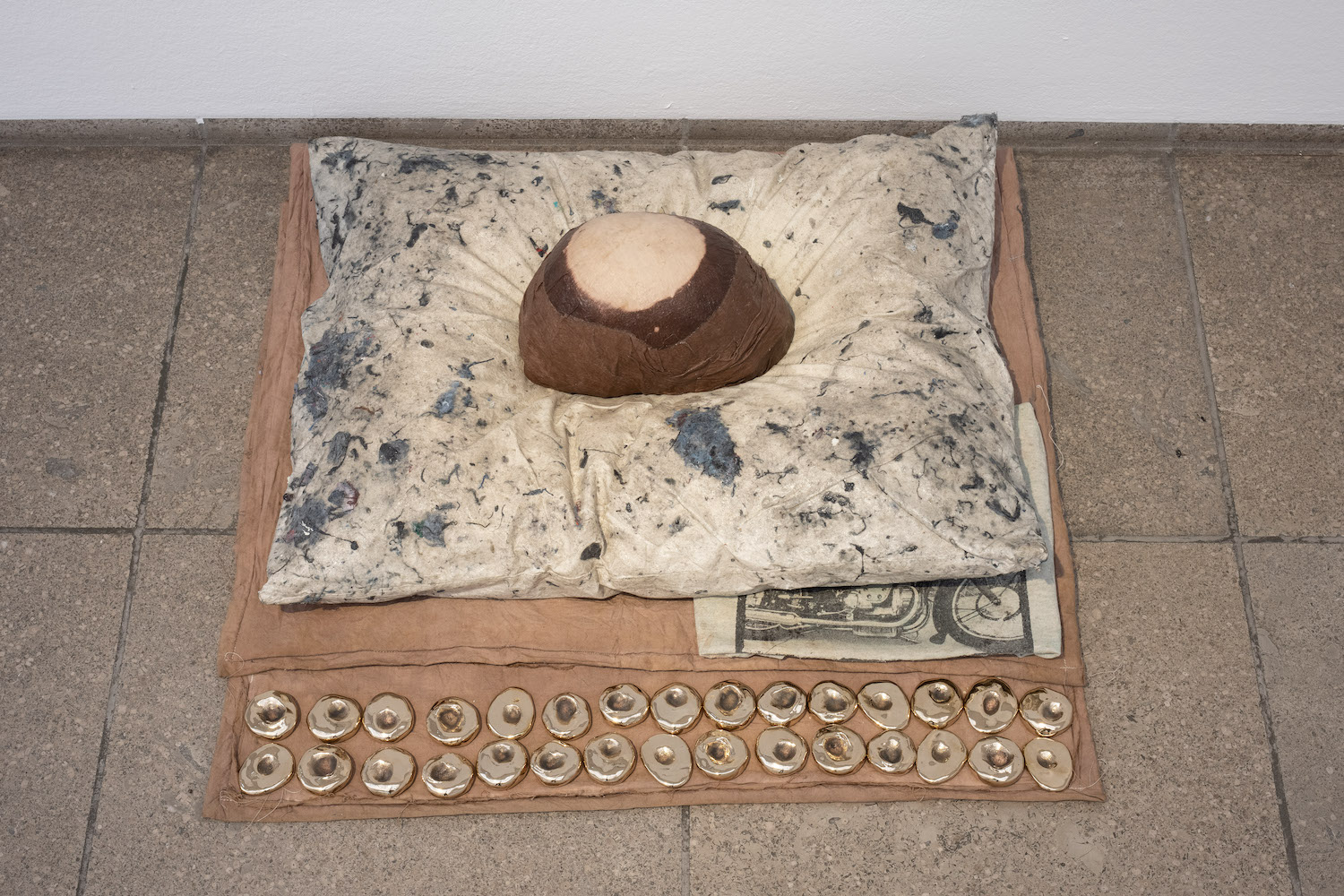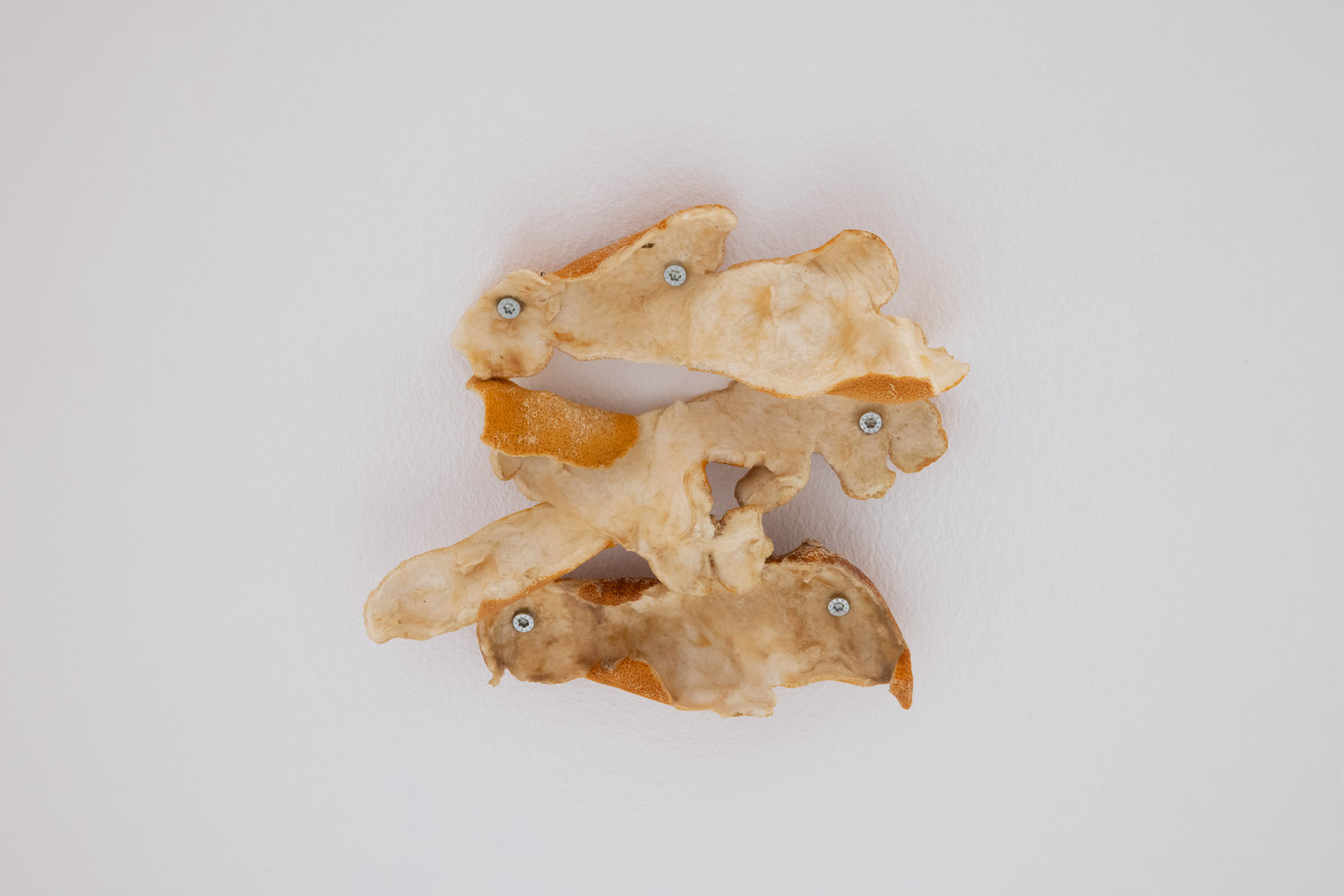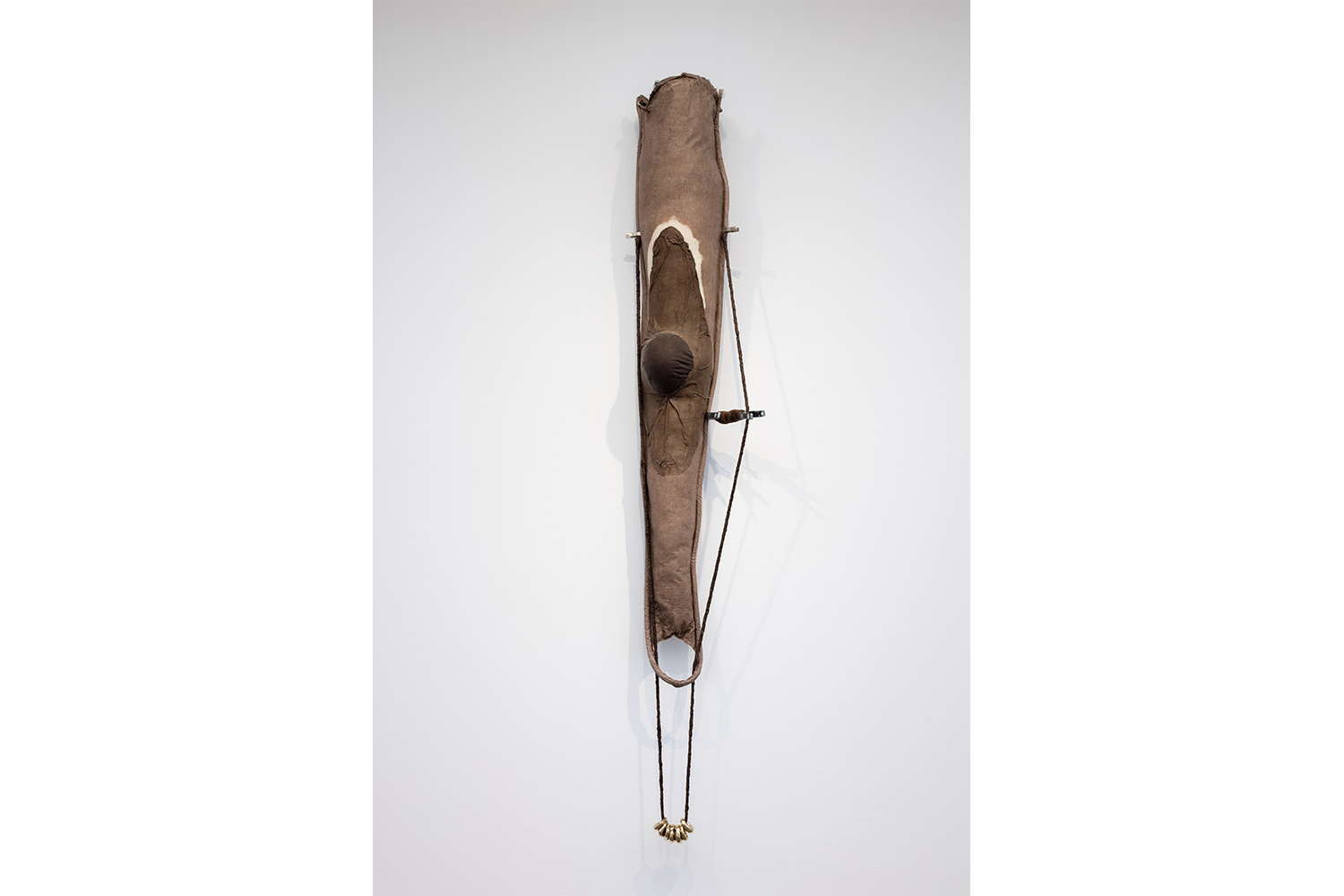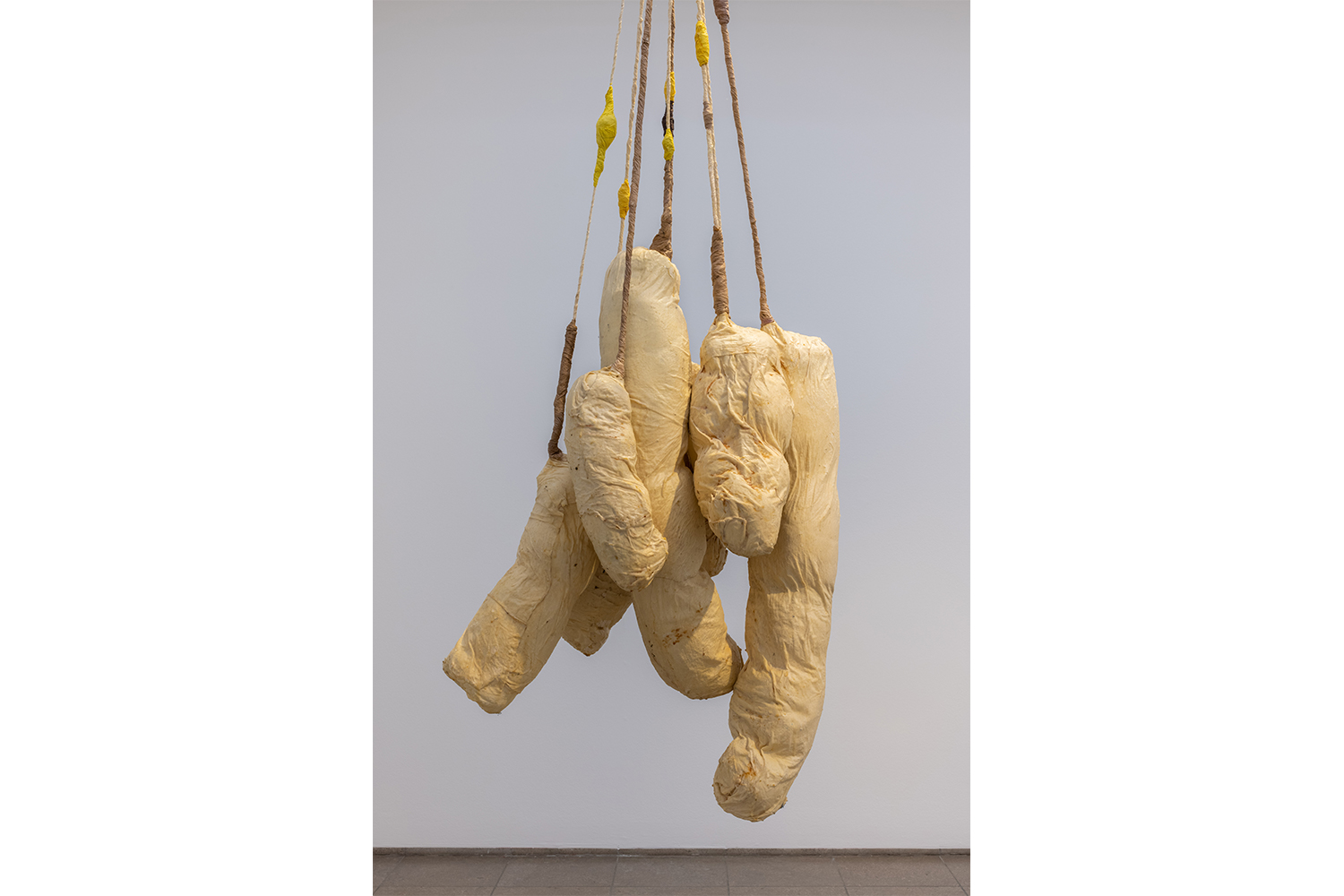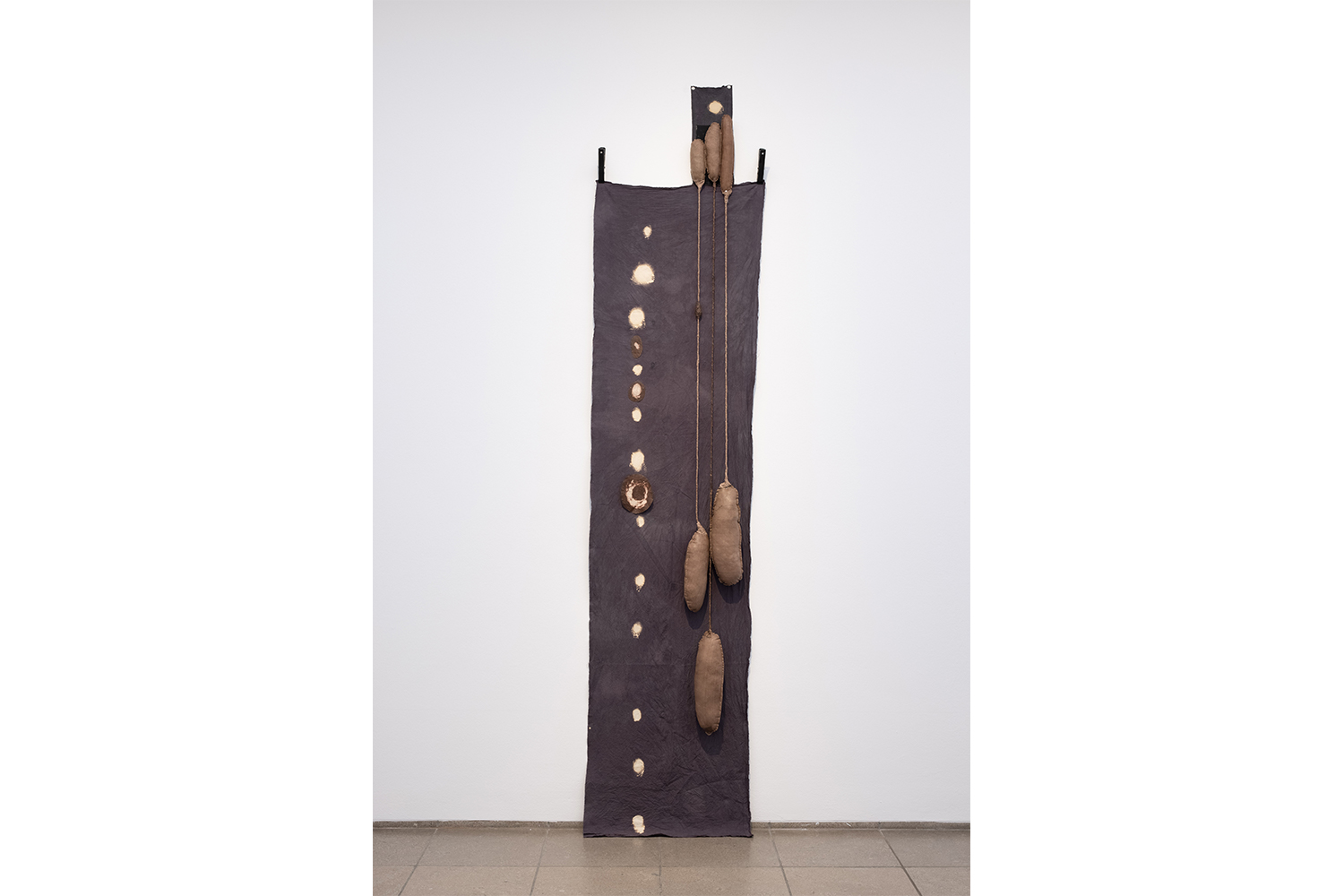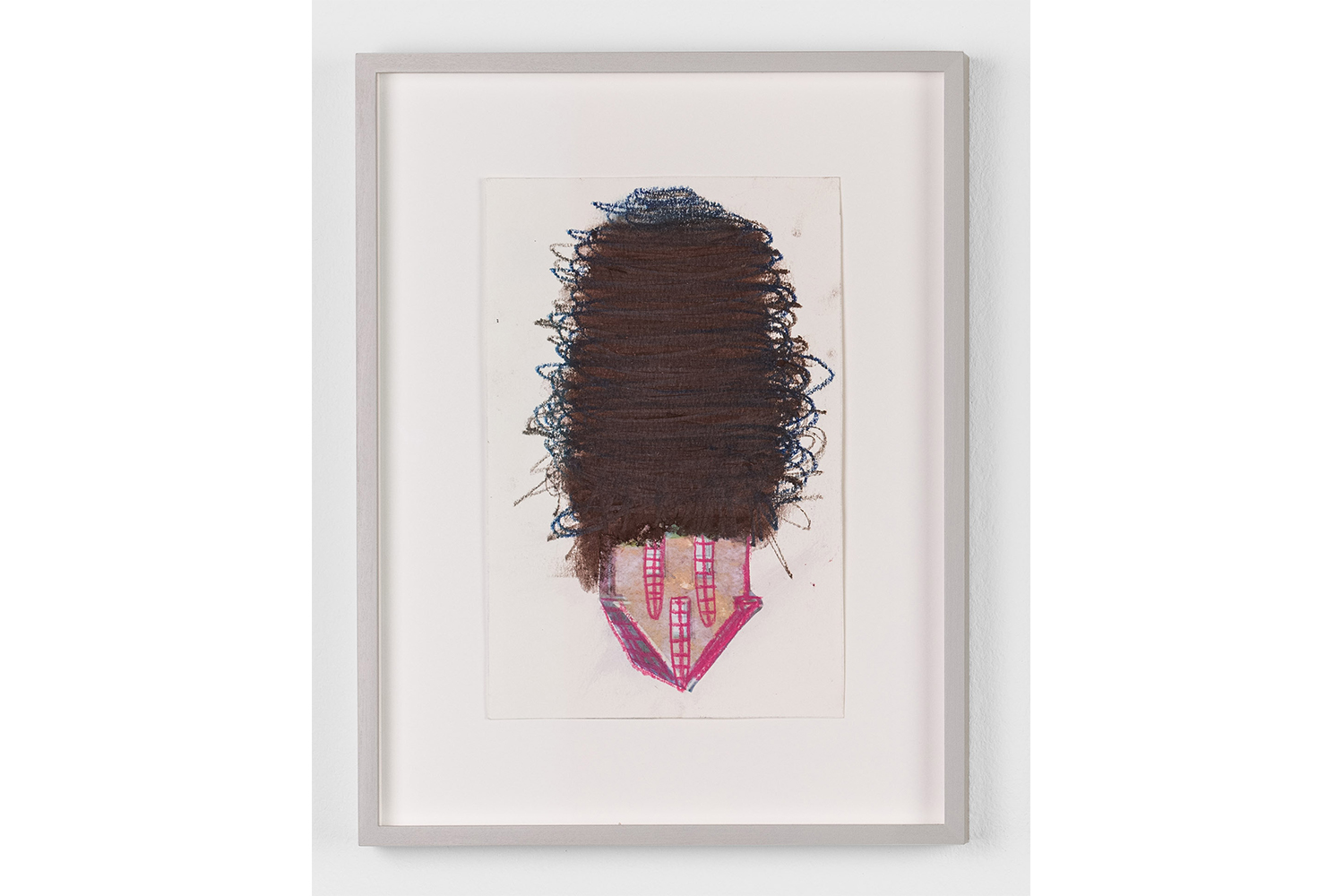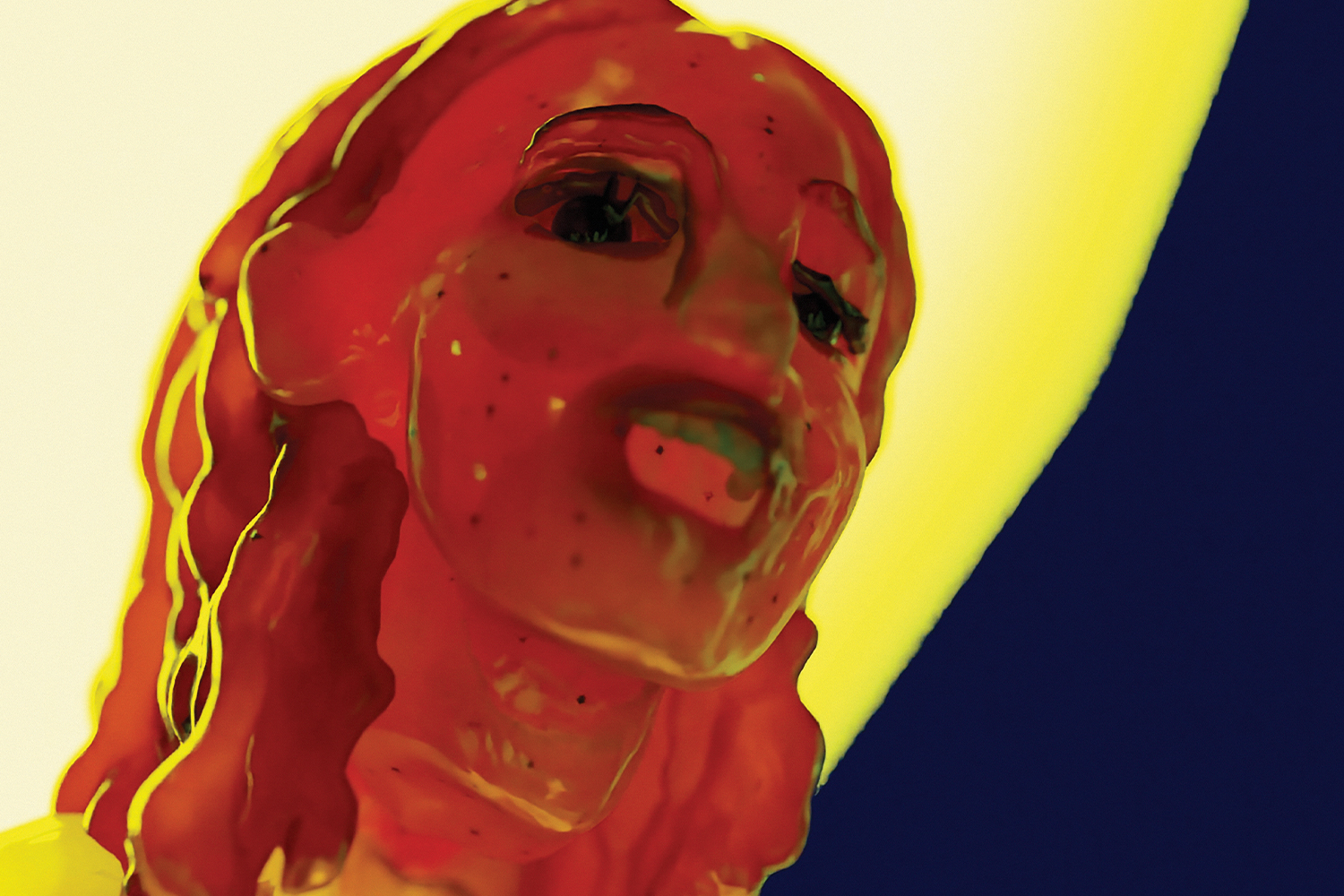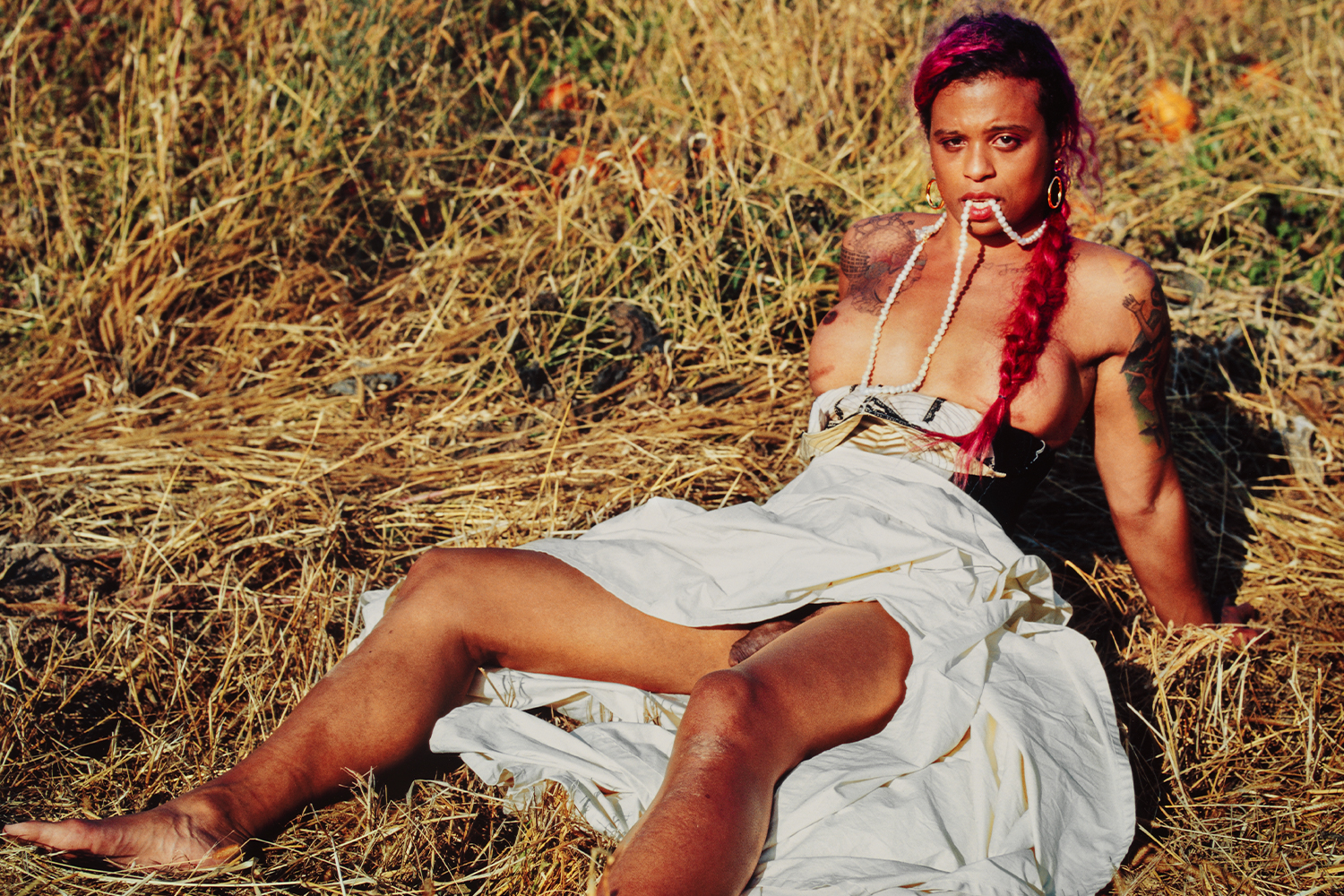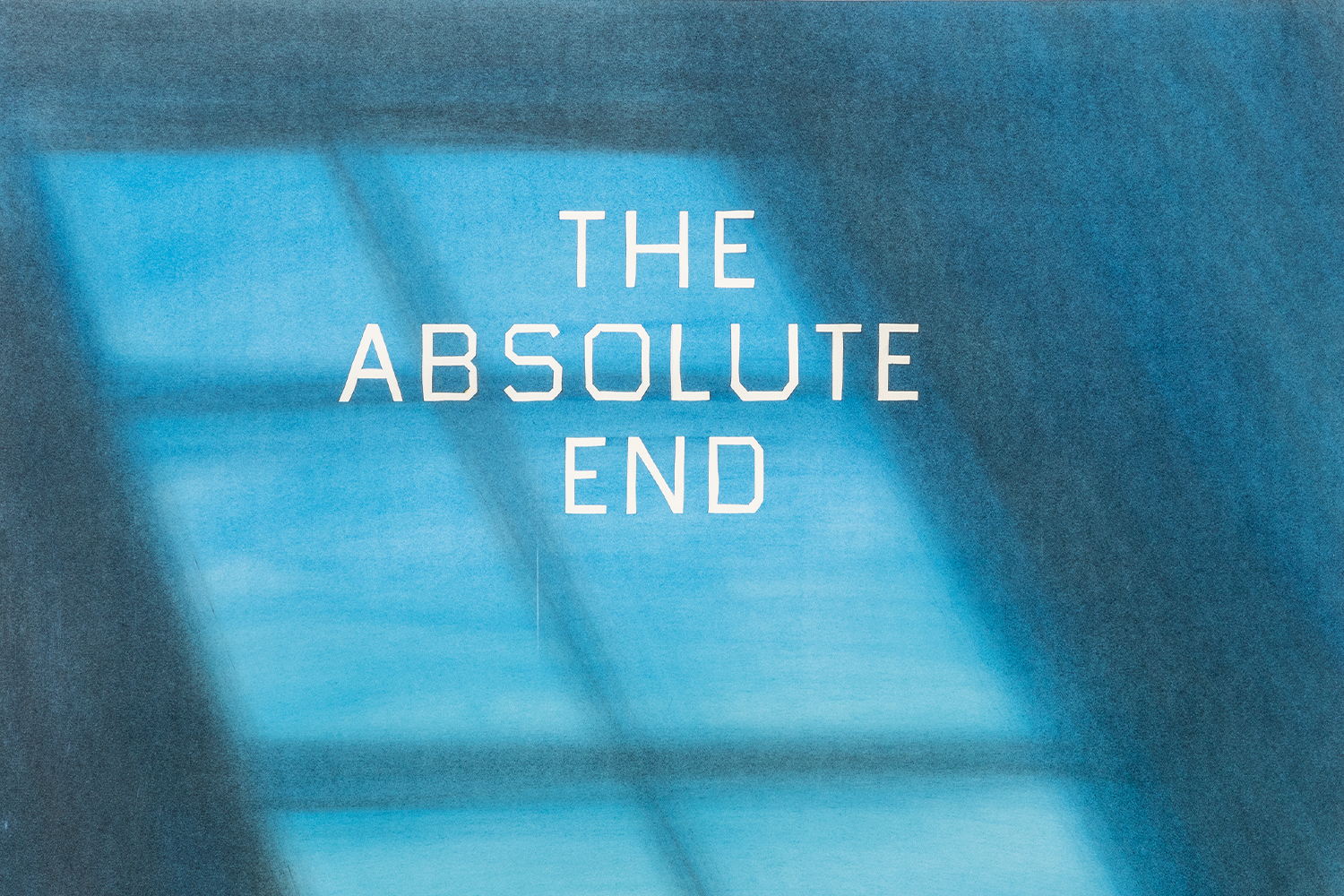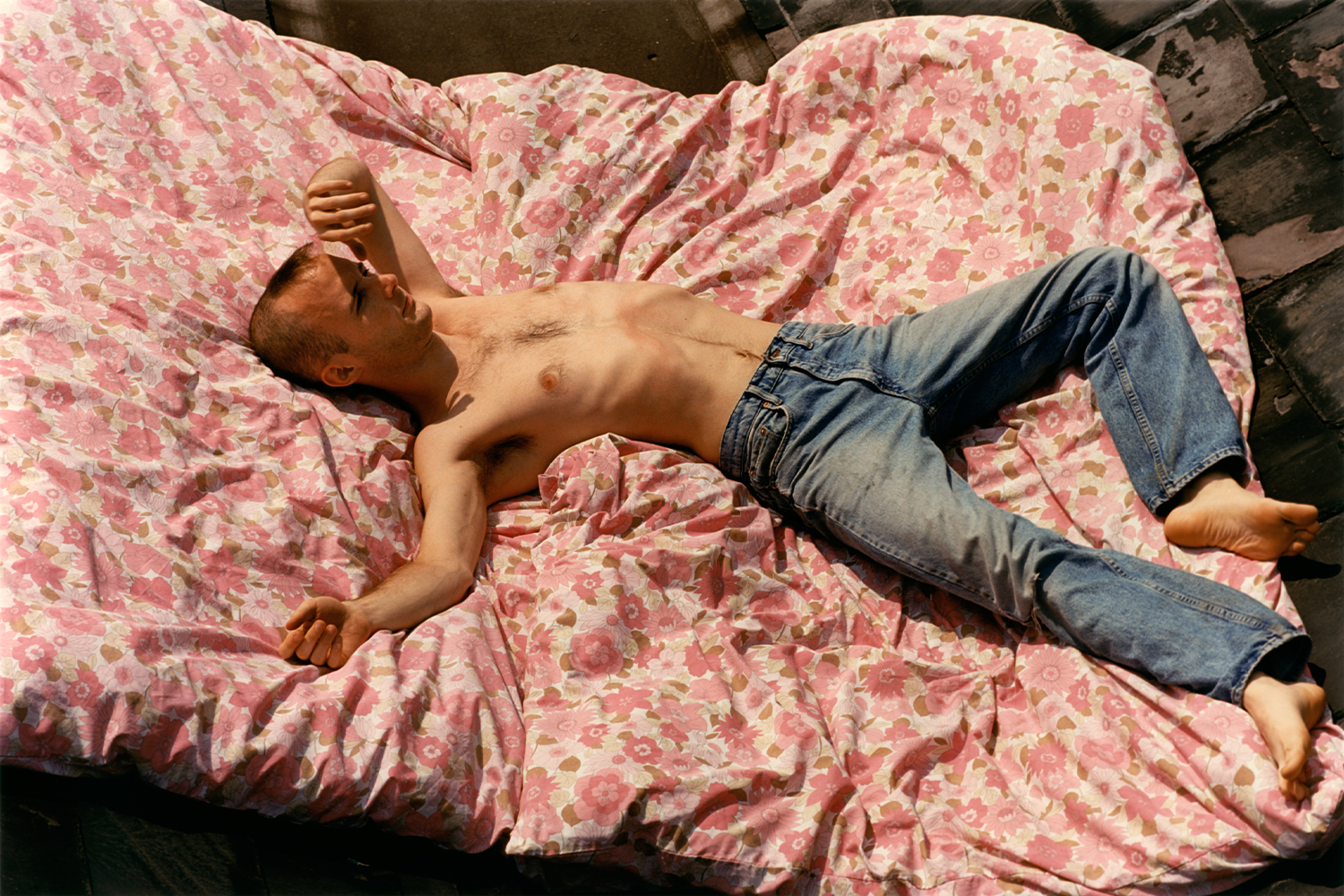US artist cameron clayborn (b. 1992) made the sculptures homegrown #1 and #2 in 2021, and yet the wafer-thin structures are among the oldest works in this show at Hamburger Bahnhof. The pieces were gifted to the Berlin institution as part of the Bâloise Art Prize, recently awarded to clayborn. The tapering, denim- blue objects are suspended from the ceiling and gently touch the ground. It seems like the slightest wind would make them sway.
The artist spent weeks in Berlin during the run-up to the exhibition, and much of the work on view in three galleries at the former train station was produced locally. Some of the paper works are older, and the artist also models small clay objects whenever possible — for instance on a month-long road trip through the US — which are then cast as bronze elements to be included in more intricate pieces.
Compared to clayborn’s previous work, this show indicates a turn. The older pieces had a blob-like quality. Take coagulate (2019), which had previously been included in “Through the Wrong Tongue” at Simone Subal Gallery in New York: smooth, organic shapes made from filled vinyl bags in different shades of brown and tan, very soothing to look at. They are representations of the artist’s father’s legs, stripped of naturalism until they are barely anthropomorphic. Additionally, these emotionally charged objects become somewhat functional when clayborn uses them in performances.
Recently, clayborn’s works have opened up to new iconographies of the abject and erotic. It is almost as if the artist gave up on smoothness, blowing up their practice to incorporate new materials — muslin, burlap, dyes — as well as new formal tenets. The objects seem to be in motion. Things are sticking out. This is what happens when an artist works under very limited time constraints: decisions are made more quickly and the unfinished is embraced, recalling the spontaneity inherent in performance.
Representations of legs and other body parts still figure in clayborn’s work, but their shape has changed. They are abstract, no longer smooth but wrinkled. Fine and coarse materials clash amid with anus-like orifices from which strings extend, wrapped in fabric.
A work like a kernel (woron) #1 (2022) seems precariously tense and ready to jump into action, allowing for many ways of looking at it. In the middle of the structure something emerges resembling a head behind a translucent membrane, eerily organic. Like in an old painting, the head seems to follow the viewer, while the dyed muslin fabric appears translucent, hinting at an inside. The term woron comes from the Mandé, an ethnic group originally from West Africa who made up a large portion of the enslaved people in the US. The word refers to a primary Mandé aesthetic value, as the historian Robert Farris Thompson observes: the search for simplicity and elegance. Woron means to get to the kernel, to master any aesthetic endeavor — in the case of clayborn’s work, an honest representation of oneself.
The show opened during Berlin Art Week, which traditionally marks the end of summer, and in 2022, large galleries and institutions presented a roster of post-internet artists. clayborn’s work is a contrast to the art of geriatric millennials who think about the infinite layers of digital mediation. clayborn’s sculptures are personal and intimate, and they play on autobiographical details, from the popcorn ceiling paint that is baked into homegrown #1 and #2 — a reminder of the houses they grew up in — to the shirt of clayborn’s cousin, who died in a motorcycle accident. But those could be stand-ins for anybody, especially for people who exist in a body like clayborn’s. “Vulnerability is a total testament to power,” they write in a diary entry that is reproduced in the catalogue. The work is autobiographical, but one should not for a moment think that it is only about clayborn.

